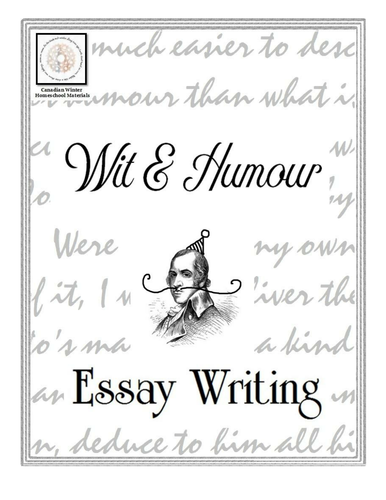

Research and Reflect!
The student will read six short papers about ‘Wit and Humour’ by Joseph Addison (1672 – 1719), in which the author describes different types of humour and offers his opinions about whether these are effective or appropriate. (Please note, these essays are not themselves humorous!) The student may also read two short samples of humorous writing (included) by P.G. Wodehouse (1881-1975). Several topics for essays are suggested. The student may choose to write an essay that simply refers to the texts by Addison, or one in which they use what they have learned in the Addison texts to analyze one of the other pieces of writing. For two suggested topics, a small amount of extra research is required. Detailed instructions are included.
Texts:
Five Short Papers on Wit and Humour
Joseph Addison was an Englishman who is perhaps best known for his play, ‘Cato’, which deals with themes such as individual liberty versus government and has been described as ‘almost certainly literary inspiration for the American Revolution’. The play was well-known to the founding fathers - in fact, George Washington arranged that it be performed for the Continental Army while they were encamped at Valley Forge. Today Addison is also remembered as an accomplished essayist. He wrote for various widely-read magazines of his time, and was known for his ‘breezy, conversational style’, and his ‘cheerful and respectful humour’. The short, critical essays included here are: Lampoons, True and False Humour, False Wit, Punning, Etc. and Wit and Judgement (not original order or titles).
‘Damon and Pythias, A Romance’ and ‘Extricating Young Gussie’ (excerpt)
Sir Pelham Grenville Wodehouse was one of the most widely-read humorists of the 20th century. ‘Damon and Pythias, A Romance’ is a simple comic poem. The prose excerpt provided here, from ‘Extricating Young Gussie’ (featuring the well-loved characters of ‘Bertie Wooster’ and his manservant ‘Jeeves’), gives a good idea of the style of his more renowned novels.
TIP! This may be a good choice for a student with an interest in philosophy or the 17th-18th century.
Something went wrong, please try again later.
This resource hasn't been reviewed yet
To ensure quality for our reviews, only customers who have purchased this resource can review it
Report this resourceto let us know if it violates our terms and conditions.
Our customer service team will review your report and will be in touch.